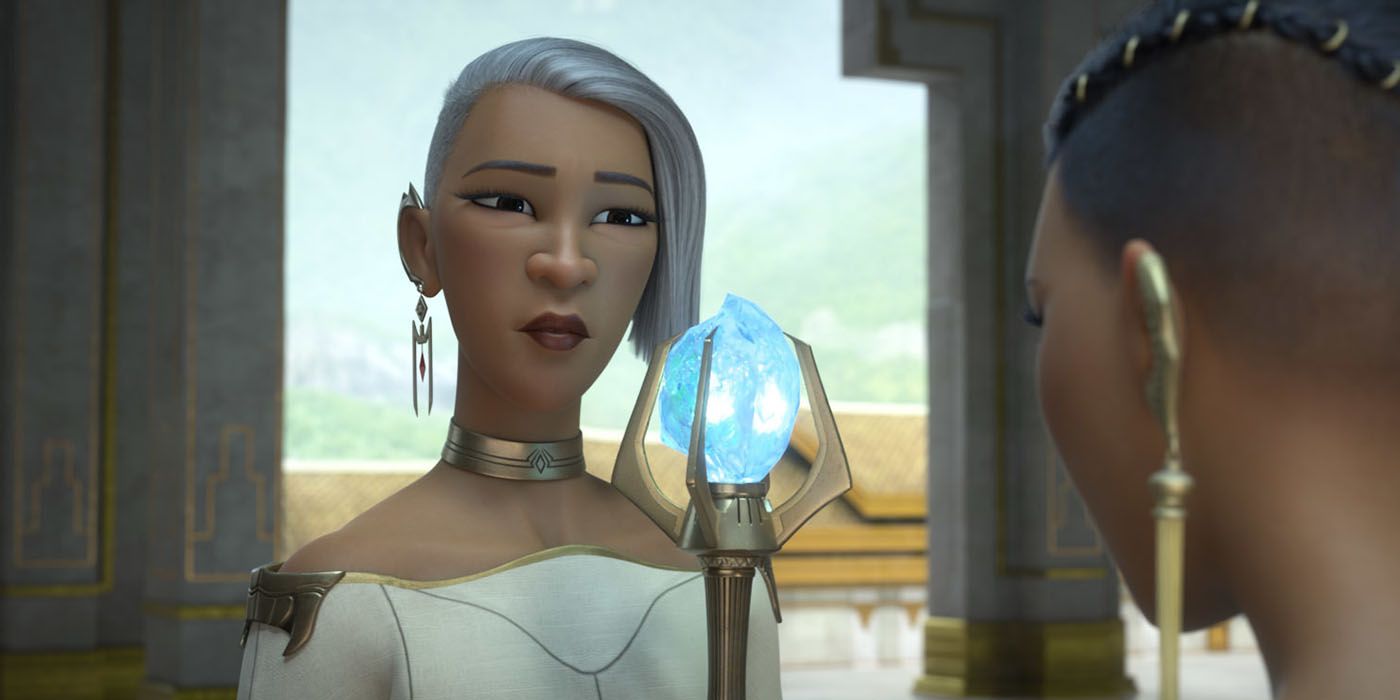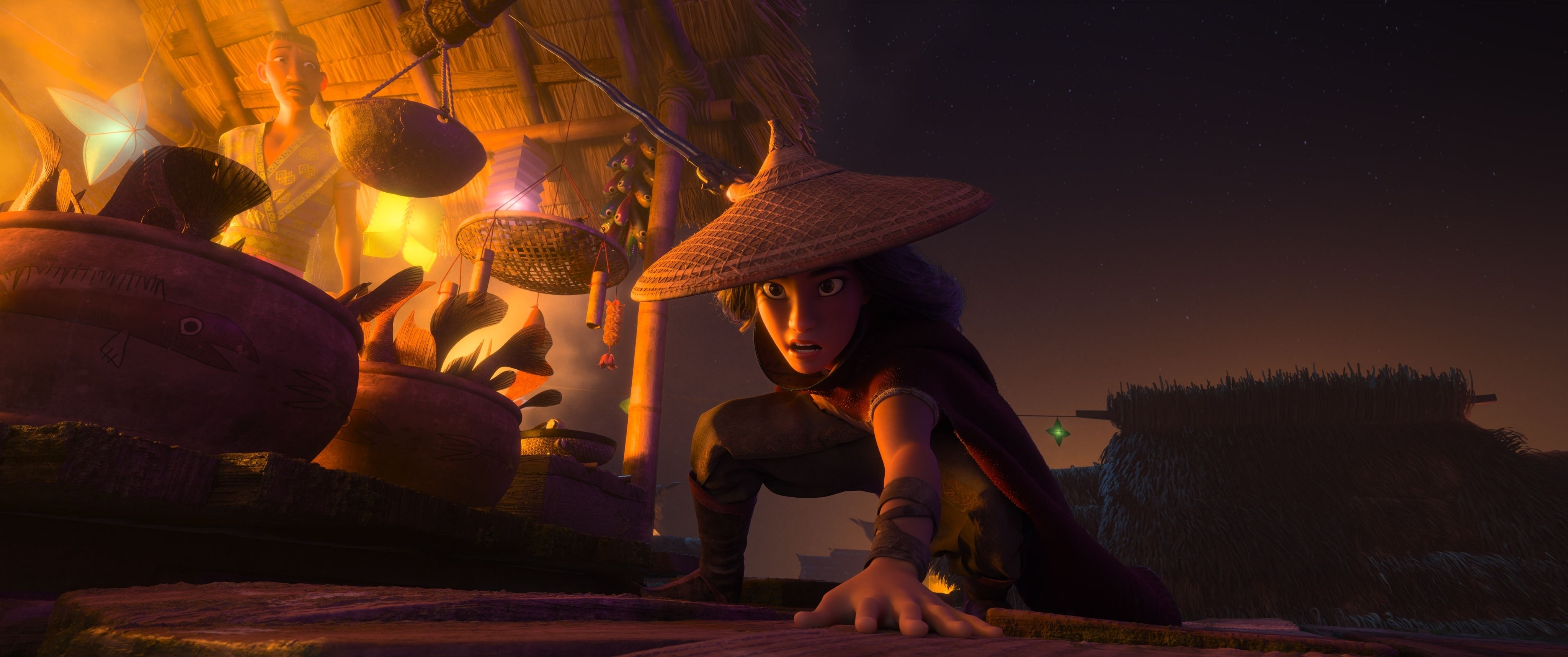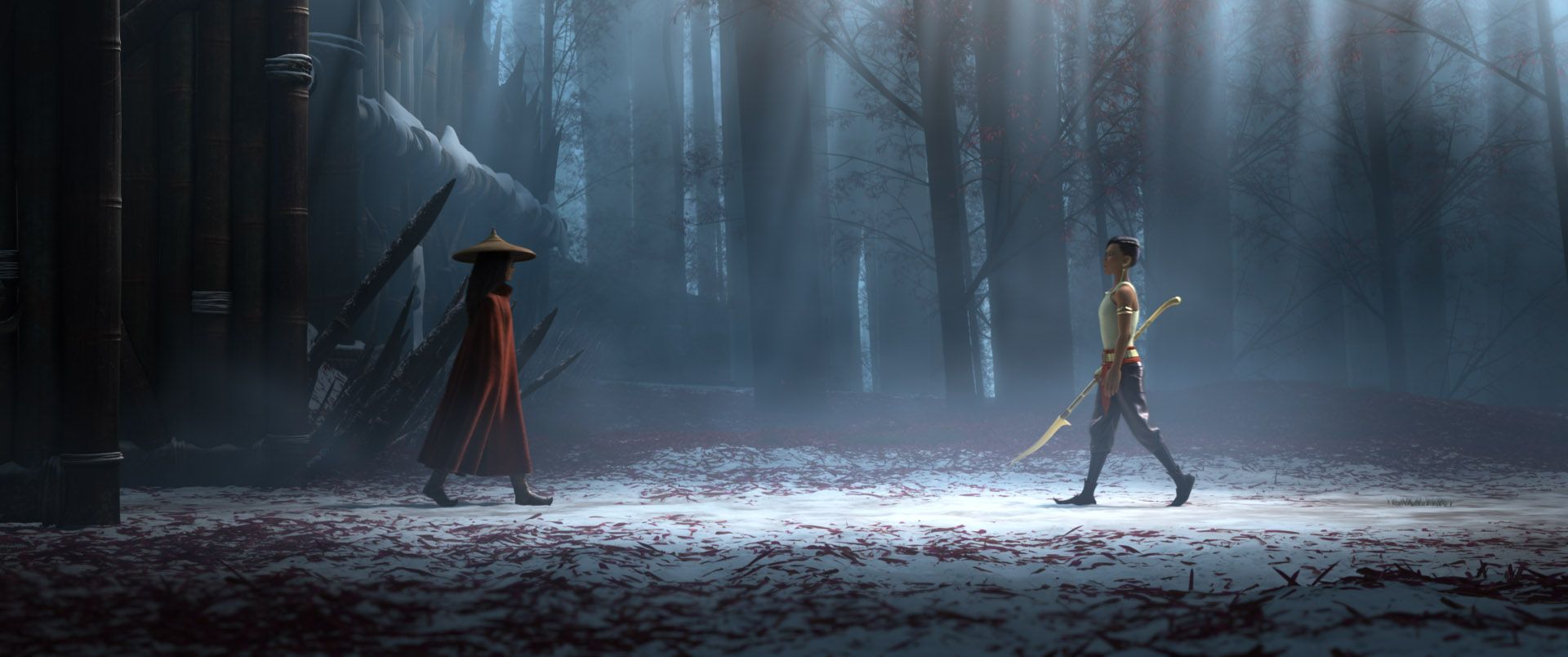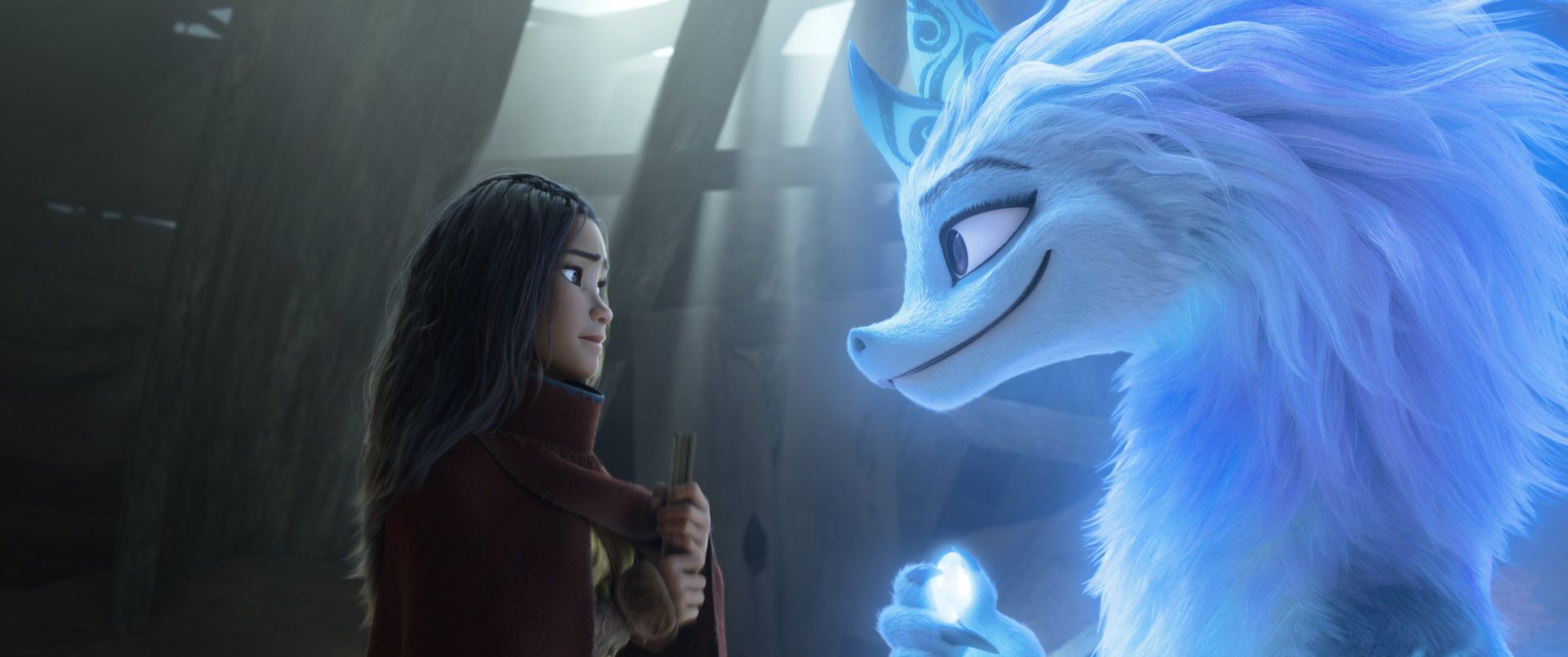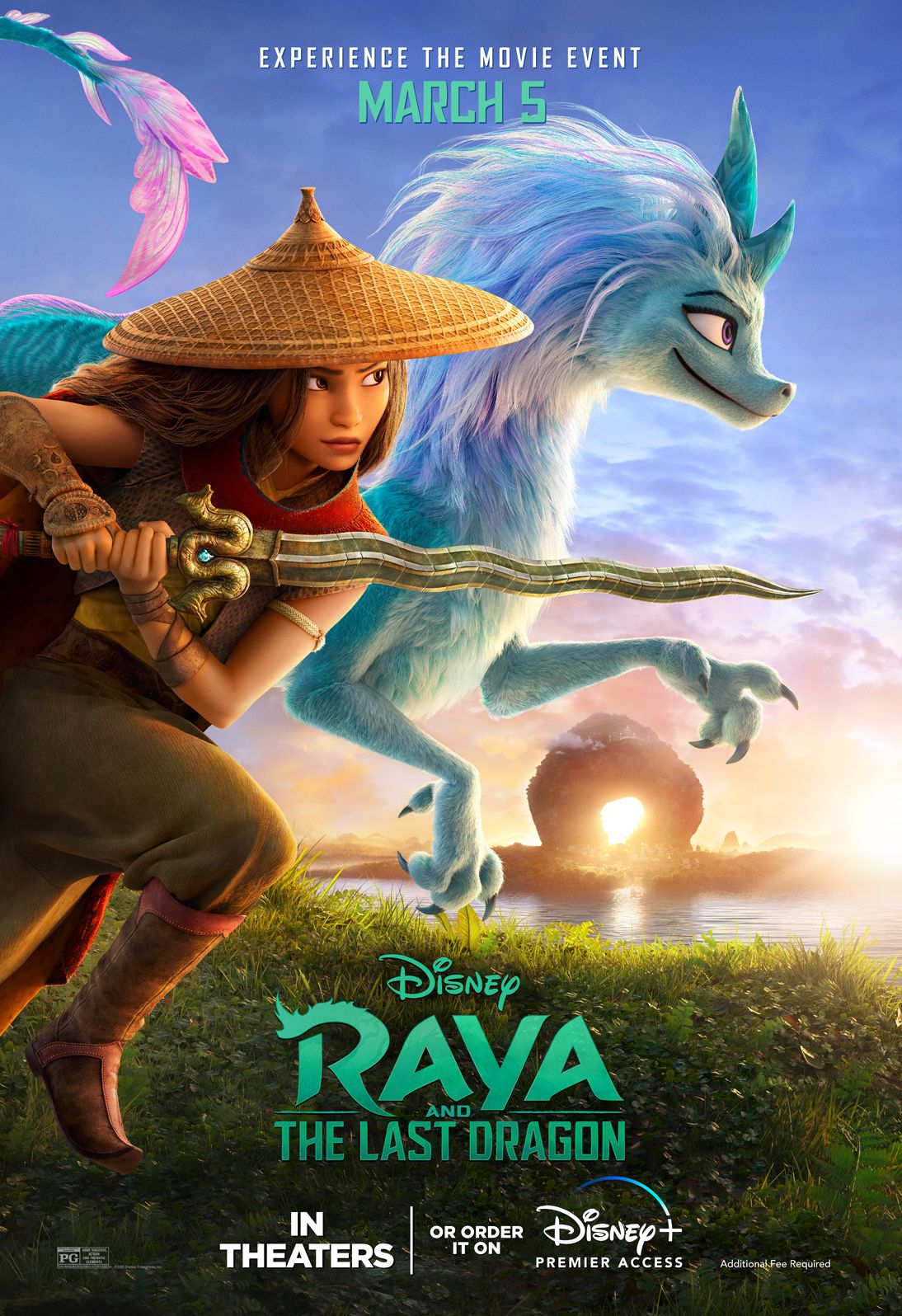Raya and the Last Dragon is the 59th film produced by Walt Disney Animation Studios, but it’s the first-ever that was finished at home. Directed by Don Hall and Carlos López Estrada and written by Qui Nguyen and Adele Lim, the original story takes place in the fantasy world of Kumandra, which long ago fractured into five separate lands when dragons sacrificed themselves to save humanity from an evil force. When that evil force returns 500 years later, it’s up to a warrior named Raya (Kelly Marie Tran) and her ragtag group of companions – including the titular last dragon Sisu (Awkwafina) – to save the day.
Recently, Collider got the chance to speak with Amy Smeed and Malcon Pierce, who both served as Head of Animation on the film. During the interview, Smeed and Pierce revealed what the biggest animation challenge was on the movie and how they went about accurately portraying different martial arts styles. The two also got candid about the experience of having to leave the office and figure out a way to finish animating Raya and the Last Dragon from home, and the pros and cons they found in working this way for the first time.
Check out the full interview below, which was conducted by Drew Taylor, and for more check out our interviews with the film's directors and producer and co-writer. Raya and the Last Dragon will be released in theaters and on Disney+ with Premier Access on March 5th.
So every time one of these animated movies comes out, everybody always talks about the big challenge. It's the water horse in Frozen II. What was that on Raya? Was there one thing that you guys thought, "I don't know how we're going to crack this?"
AMY SMEED: Yes. A few of them. I think the first one that immediately comes to my mind is the character of Sisu. We've never done a character like that before. So even just starting from the very beginning of how are we going to build her rig for animators to use, she has a very long, serpentine body. And then in addition to that, what is her locomotion style as a dragon? How does she swim? She runs on raindrops. How is that going to work? What is that going to look like? We had a test that was created by one of our animators Riannon Delanoy, and we were still developing the character rig, and she jumped on to help just start exploring different ideas. So our supervising animator was Matt Kaplan. So they partnered together and talked about ideas, and then Riannon went off and she created this amazing locomotion test for Sisu and how that might work. And we showed it to the directors and they loved it. And she was an animator on the sequence where Sisu runs on raindrops, one of the bigger shots in that moment. And so everything she had learned from that test, she was able to bring into that specific shot. So that's what I would say in terms of character and figuring out. I would say Sisu was probably, for our department at least, probably the most challenging.
Was it fun, though? Because it looks like you got to incorporate some squash and stretch and more traditional animation vernacular in this character. Was that fun and was that an intention on your part?
SMEED: Yes, definitely.
MALCON PIERCE: Yeah. I think range is always such a big thing we talk about, and Raya paired with Sisu was a really nice complement to each other, because I think it also allowed animators to stretch their different instincts, where we were able to cast more internalized sub-textual animators to a character like Raya and our more broad pantomime expressiveness, or cartoony, to Sisu, because I think you’re able to use the different ingredients of the characters to their full potential. But that was a bit refreshing too, because we do have a lot of... Even with Sisu, she can get very somber. But it was nice to be able to have one scene where it's all about Raya's eyes and eye darts, and then go to a Sisu scene where she's holding Raya upside down and running around or whatever. It made it enjoyable in just being able to switch gears.
In the presentations the other day, they talked about how the martial arts is very grounded. And I wanted to know was there ever talk of going more Crouching Tiger on that? And also, what did you guys look at and how did you get that right?
SMEED: Yeah. I would say early on in pre-production, Malcon and I were exploring what could we do with the martial arts style, and we started doing some research into it. There are a few martial arts tests, really before we had defined anything specific for the film, which were incredibly inspirational. And then Malcon and I, one day we learned that Qui, one of our writers, he actually specializes in martial arts. And we were like, "Oh my gosh, this is amazing. We have somebody in the building we can talk to." So he was really excited to talk to us and really dove into the different styles. And then he, just as being the writer and knowing Raya's personality and her backstory versus Namari's, he really helped us define what those styles would be.
So Maggie McDonald and her team, they came into the studio several times. We did choreography for all of our fights sequences. And I think with the way Qui was wanting to handle the martial arts and then with our team just really looking at that reference and trying to stay true to how that works, specifically for each of those characters was how it ended up turning out to be for the film.
You brought up the building. So I have to ask how much of a challenge was it to get this thing done without being able to walk into somebody's cubicle and give ideas and what that whole process was like, how it affected your role and the creativity on the project and getting it across the finish line?
PIERCE: I remember when we left. It was weird. Everybody was like, "Okay, so I guess we just go home?" And I remember that transitioning happening. It felt like it was very fast. And I remember us being in meetings for a good handful of weeks afterwards, being like, "Okay. So we'll probably go back in next week maybe." And then the next week, you're like, "Maybe two more weeks," and then you'd be like, "Maybe a month." And then eventually we just stopped trying to presume when we would return to the building. But it was a very quick. It was scattered trying to figure out, "Okay. Well, how do we best utilize this efficiently?” Because we had had the ability to work from home prior to the pandemic, but it just wasn't at the scale of an entire production.
And so one of the first things that we needed to figure out was we didn't have enough bandwidth for all of the crew to be able to work on the film. So in the first couple of weeks, it was like, "Okay, this amount of the team can work from this time, and then this amount of the team works from this time so that we can not overload everything and then lose all of our servers."
So we figured that out. And then I was like, "Okay. Well, what’s the best way to review animation?," because normally we're all just sitting in a room and we look at it on the screen. We tried different versions of where we were all looking at one monitor and we were streaming it, and then eventually landed at a place where we all had iPads that we could play a real-time on our own. And then we would have it up on one computer monitor, like a shared screen for reference. And that ended up being, "Okay, this feels right.” Any time we're able to feel like we were focusing on the artwork and the film and not the technological limitations of working from home, it was a good moral compass. It's like, "Okay, well let's keep doing that."
So relatively quickly, I feel like we found our cadence and got in the groove of functioning and working like this. And then what we found is we were losing... Any spontaneous interaction was out the door when working from home. And so we felt like we needed ways to bring that back. And so then we started doing a unionized scheduled, just a check-in with a handful of animators every couple of weeks. We would set it up like, "This is our hallway conversation. So whatever is going on in your head, this is the place just to talk and hang out. And we don't have to talk about your shots or whatever."
And that was really cool to feel out how everybody was doing, because everybody had such different environments, parents, people working with kids. So then we needed to figure out, "Okay, how can we be very flexible with all of the artists' needs so that they feel like they cannot drown in the situation that we're in?" And so I think the studio became very flexible and very malleable in how we were going to make the movie. And I think there was a lot of really amazing things that came out of that, artists having ownership over their work, because it was just up to them to give in it and do their best work and then bring it to us.
It wasn't like, in the building, "Hey, you can swing by. Hey, how's it going? How are you dealing with this thing or that thing?" And so a lot of artists really enjoyed that actually and felt inspired and trusted to just do great work. And the fact that the studio was saying, "Okay. Well, what do you need from us to do your greatest work? Do you need us to only give you a certain amount of shots or these types of animation, do this type of thing, or do you want to just work these certain hours and not this day?"
So it became a really great relationship between the humanity of the studio, I guess, of, "What do you need from us to make sure that the priorities that you're feeling engaged in healthy, and we're not just burning everybody out to try and get this done?" It was just pivoting very quickly and also keeping in mind everybody's needs and trying to be very facilitating to that.
Reporting by Drew Taylor.

